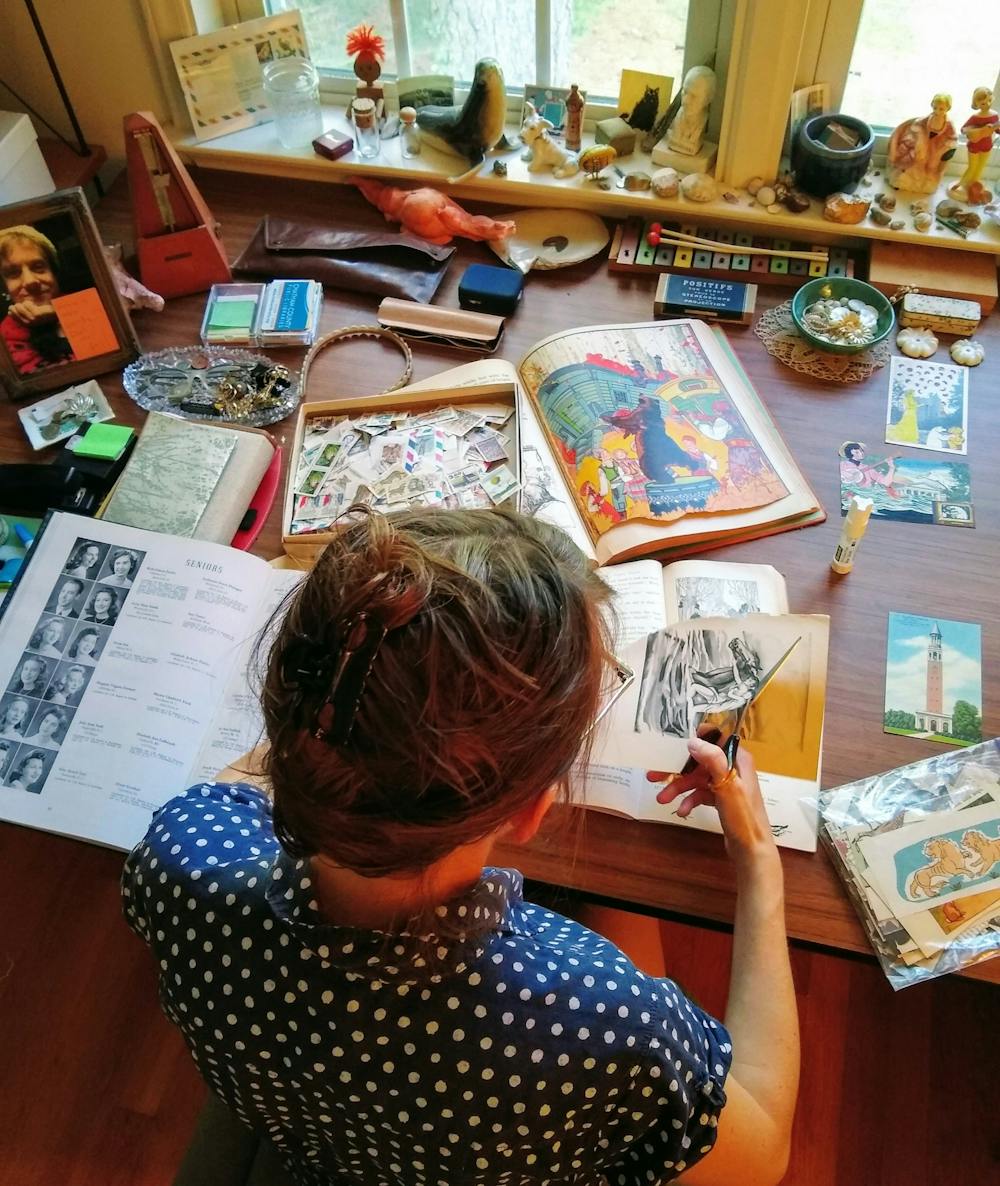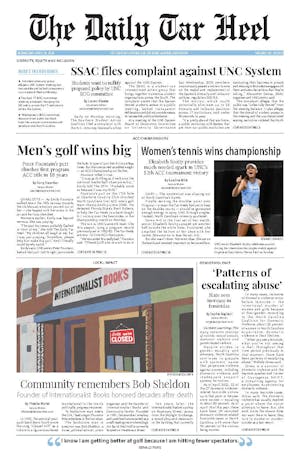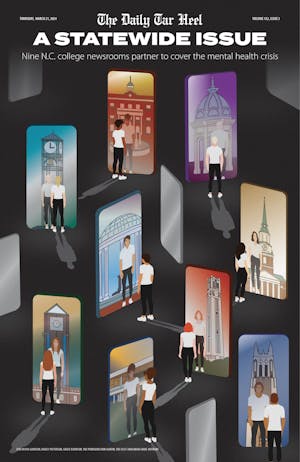Members of the Chapel Hill community have the opportunity to have their artwork displayed in Gallery 109 alongside the work of Felix Obelix, the artistic name of musician and artist Wendy Spitzer. The Town of Chapel Hill will host a workshop on Nov. 4 that allows locals to make their very own altered images alongside Spitzer.
Then, save the date — Dec. 5 will be the opening of “Altered Chapel Hill” at Gallery 109 on Franklin Street. The gallery will be open Thursday through Sunday from 12 p.m. to 6 p.m. until Jan. 5. The gallery is free and open to the public.
Altered Chapel Hill is a public art project featuring Spitzer, who creates adapted photos from vintage postcards.
“What Wendy does is unique alterations, and it's really cool. Aesthetically, they’re creative and we wanted a unique way to showcase the history of Chapel Hill,” Melissa Bartoletta, Chapel Hill's arts and culture marketing and communications coordinator, said.
Altered Chapel Hill is one of many endeavors that fall under the project "Chapel Hill 1819/2019." The Town of Chapel Hill, the Chapel Hill Public Library, UNC Arts Everywhere and many other Town offices have come together to celebrate the first development of government in Chapel Hill in November of 1819.
"It's all in conjunction with Chapel Hill 1819/2019, which is celebrating 200 years of getting better together and the different departments and divisions within the town that helped make our community thrive," Bartoletta said.
Spitzer was recognized for this project because of the work she did on a bus shelter last year, Steve Wright, Chapel Hill's public art coordinator, said.
“As part of the Chapel Hill Art + Transit program that I did with the Chapel Hill arts and culture department this past summer, I installed five pieces at a bus shelter that's actually right next to Ehringhaus dorms on UNC’s campus,” Spitzer said. “And then from that, Susan Brown with Chapel Hill arts and culture invited me to do a larger pop-up art exhibit called 'Altered Chapel Hill'.”
The photographs that will be used in Altered Chapel Hill were all taken from the archives of the Chapel Hill Historical Society. They are all old photographs of Chapel Hill, from various time periods in Chapel Hill's past.



